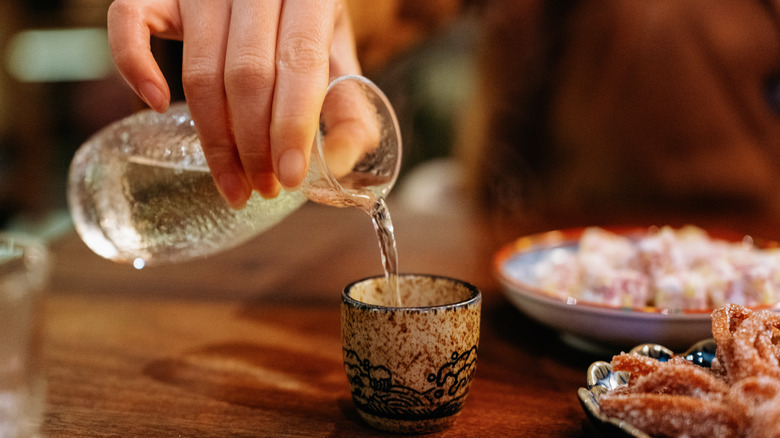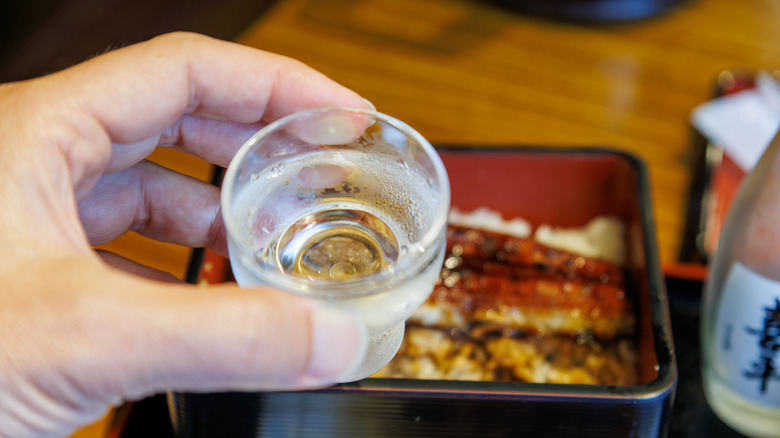What To Know Before Ordering Sake In Japan
Japanese culture involves elaborate etiquette regarding dining and drinking. From the prevalence of slurping noodles to the practice of pouring drinks and even the method of paying at restaurants in Japan, many parts of the dining experience come with a pre-established ritual. And such a traditional approach applies to sake, one of the nation's most popular alcoholic drinks.
Enjoyed for over 2,000 years, this rice-based fermented beverage intertwines with an important cultural status, consumed during holidays, celebrations, and at shrines. And there are even associated customs in restaurant and bar settings. So if you're ordering the drink in Japan, make sure to brush up on sake etiquette first.
If you order sake at a restaurant, don't be surprised when you receive a carafe called a tokkuri. Alongside it will be small ochoko glasses, which will need to be filled from the tokkuri. It's polite to prioritize pouring others' drinks first, making non-verbal cues to confirm their interest. In more formal environments, hold the tokkuri with your right hand, while propping up its base with your left — especially when pouring a glass for a superior. If someone is pouring sake for you, analogously maintaining two hands on the glass is a sign of respect. Follow by taking a small sip before placing the sake back on the table, and then proceed with dinner.
Sake comes with a traditional method of consumption
Part of sake's serving complexity comes by way of the beverage's versatility. Depending on the type, the alcohol can be poured cold, warm, and hot. Furthermore, it's often contained in a 720 milliliter vessel — approximately the size of a wine bottle. Combine that with the regional variations of sake, as well as the deceptively strong alcohol content of around 18-20%, and it's a drink that can feel intimidating to first timers.
Just know that sake (as opposed to soju) isn't consumed as a shot, but instead slowly sipped. The flavor can lean into the boozy side, but is generally smooth and palatable. Nevertheless, it's perfectly fine to sip some water alongside it; you won't get any side looks. And remember to engage in toasting culture, as there will be many rounds of drinking. The traditional ochoko vessels are approximately shot glass size, with their smaller volume designed to soften the drinking experience.
So especially if you're in a context like the world's only Michelin-starred Japanese steakhouse, remember to slow down with each sip. There's no rush to drinking sake; rather, it's a routine of relishing a communal joy in the experience. Especially since sake will taste good for weeks after opening, the beverage offers a drinking experience that bears more similarities to spirits than to wine and beer.

